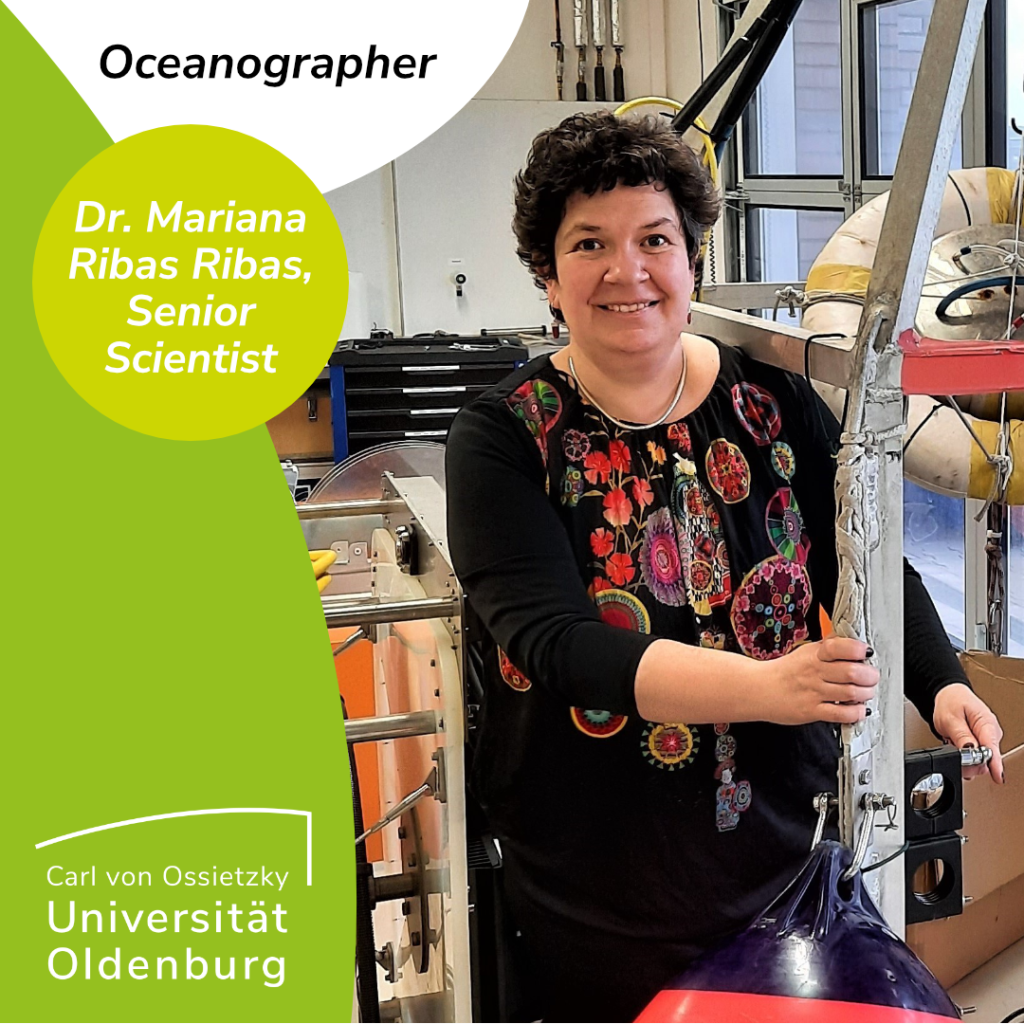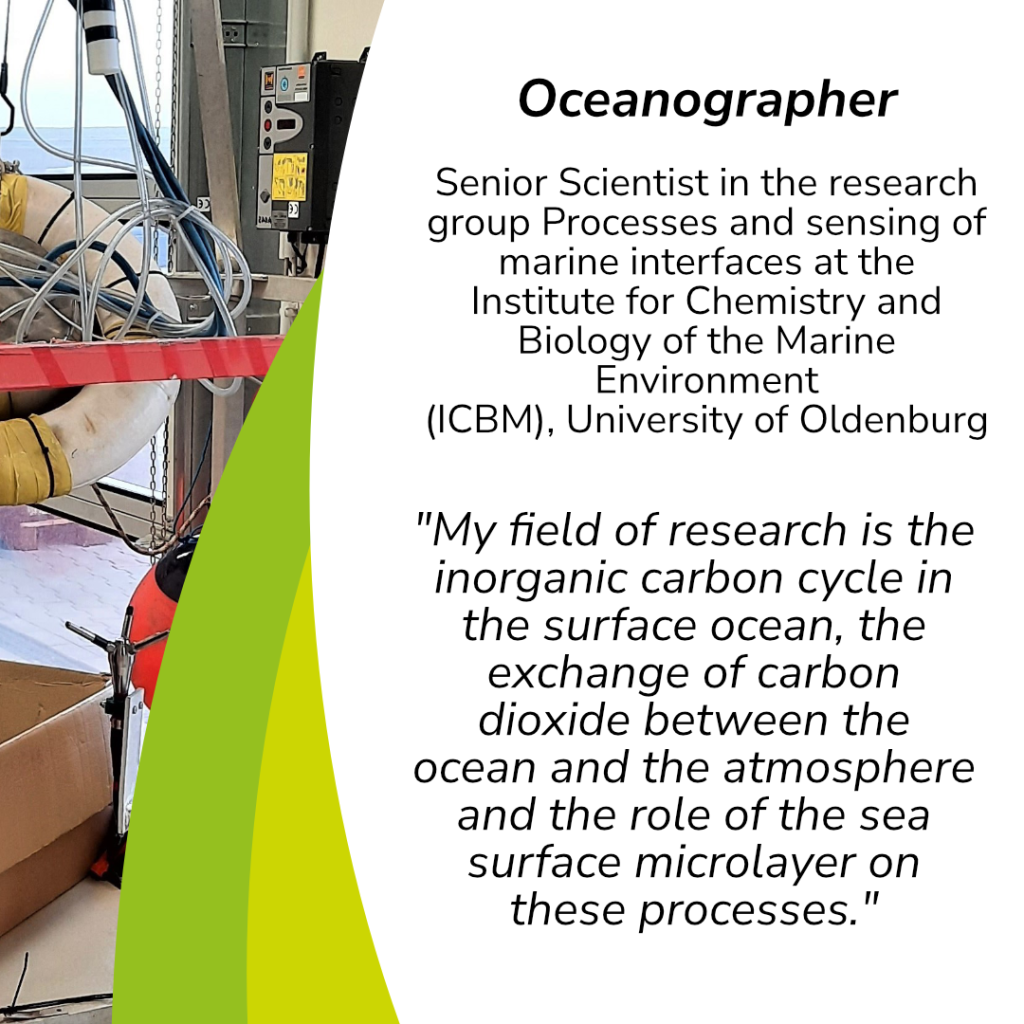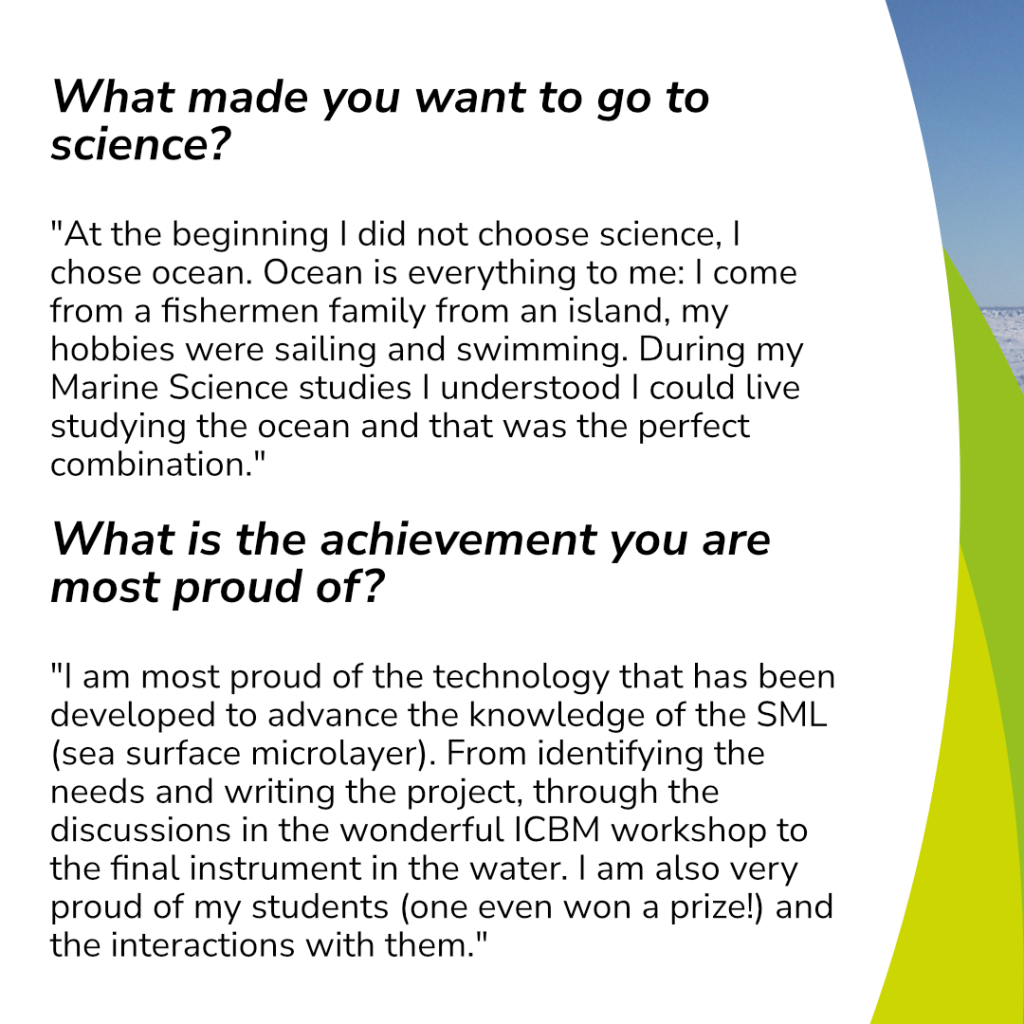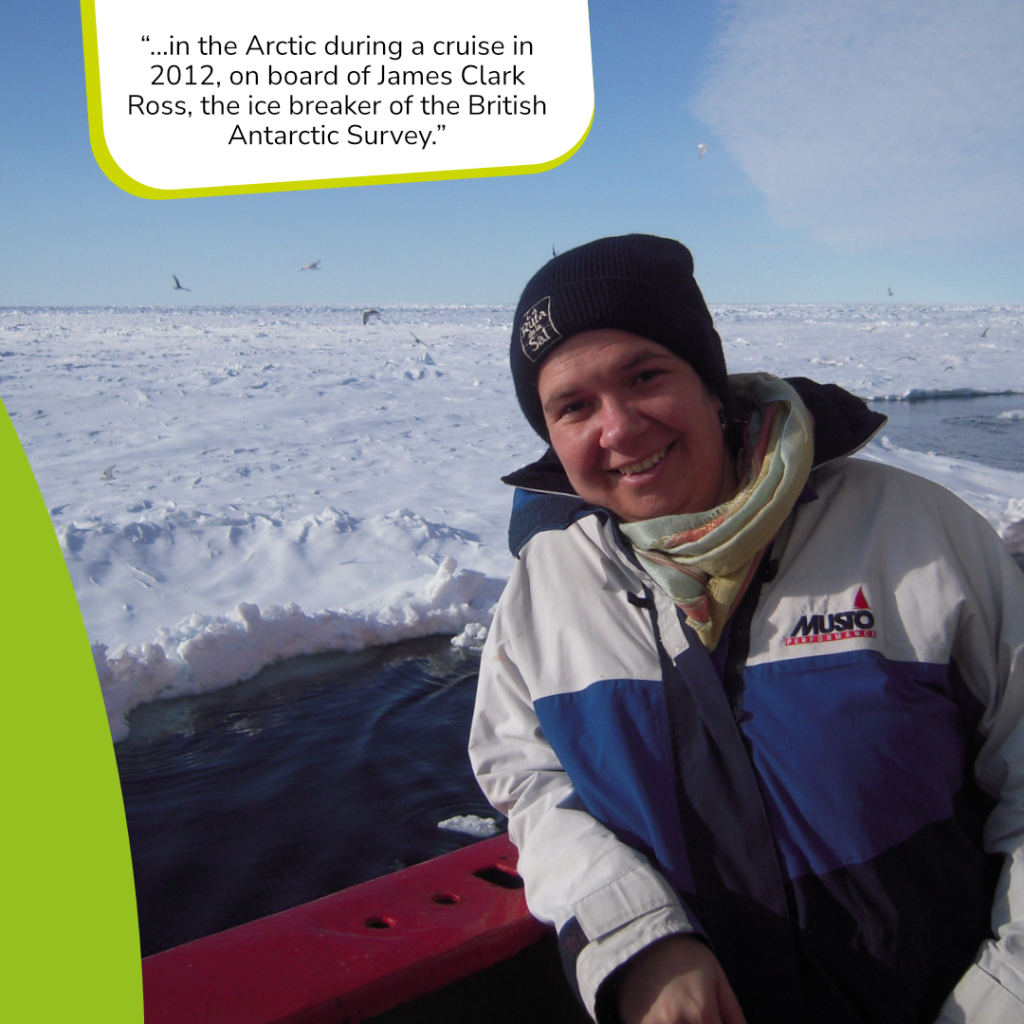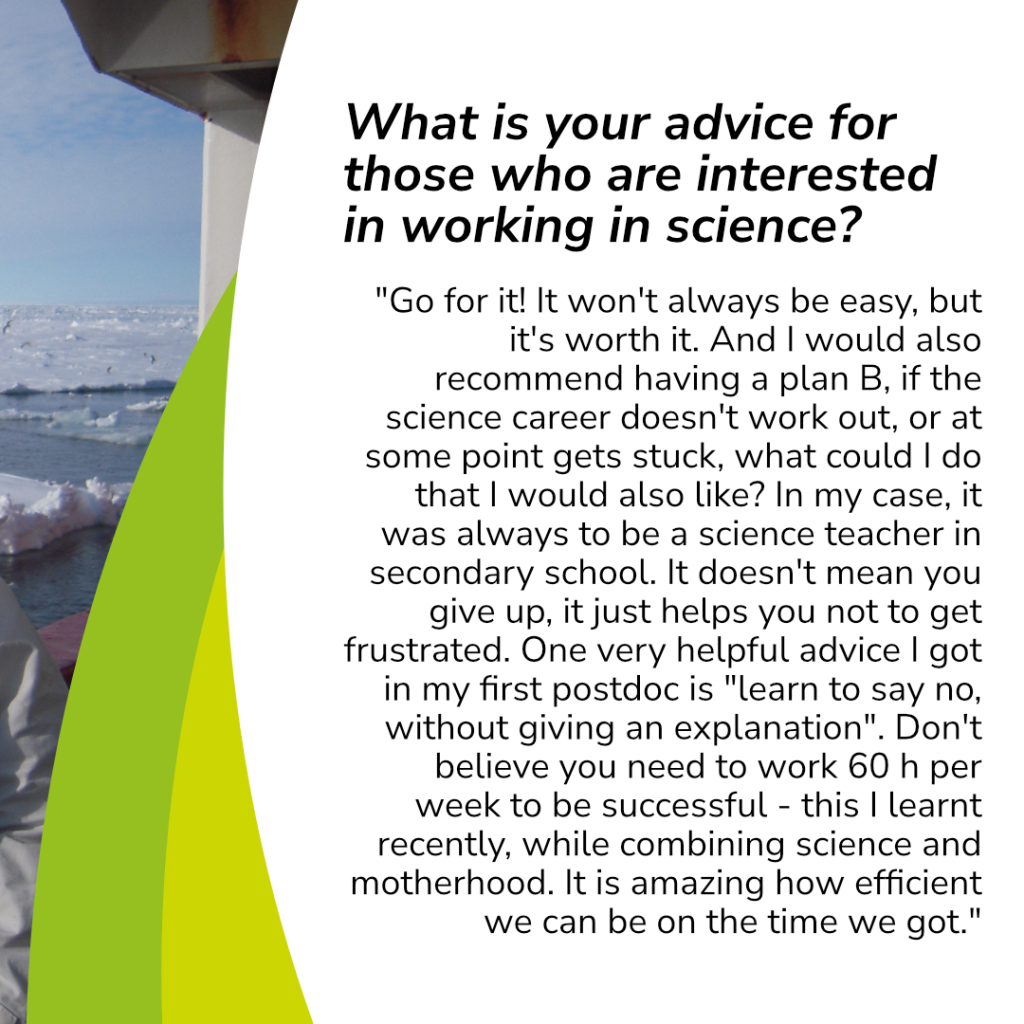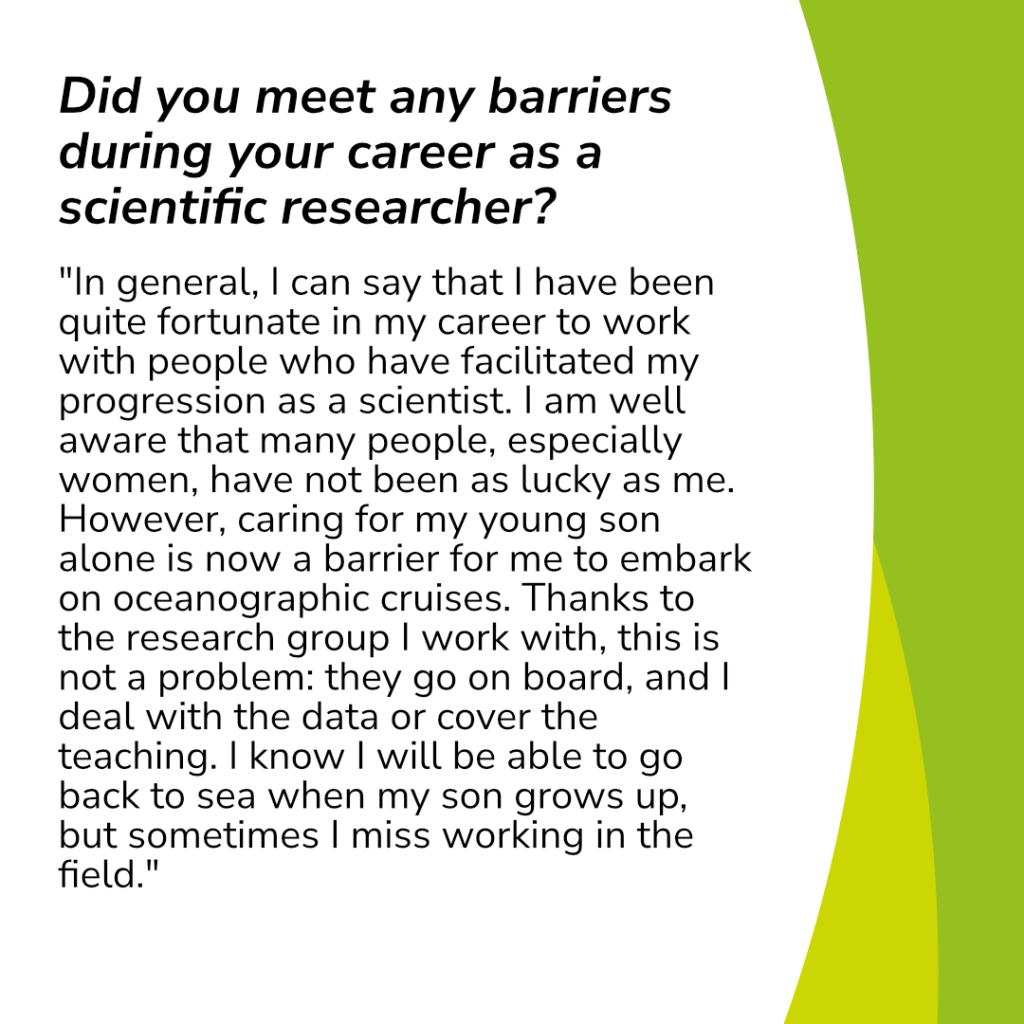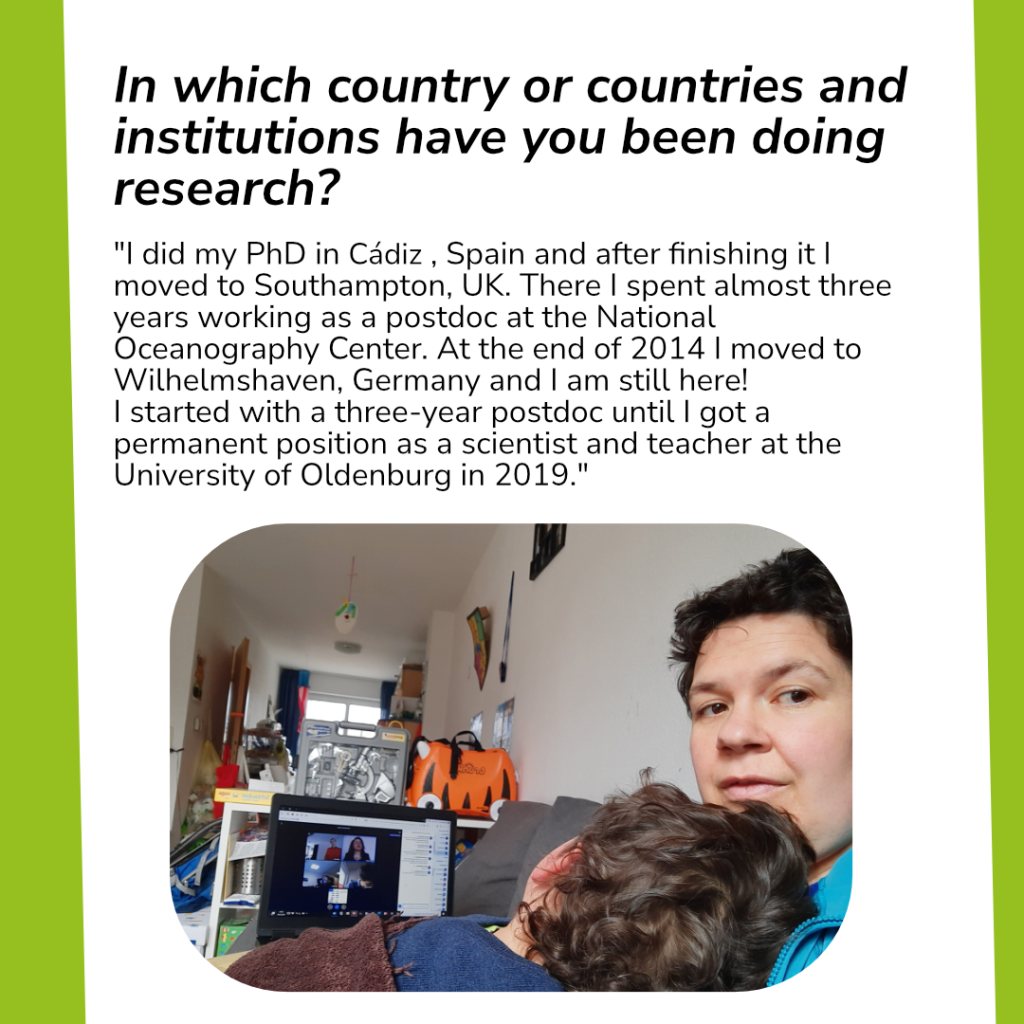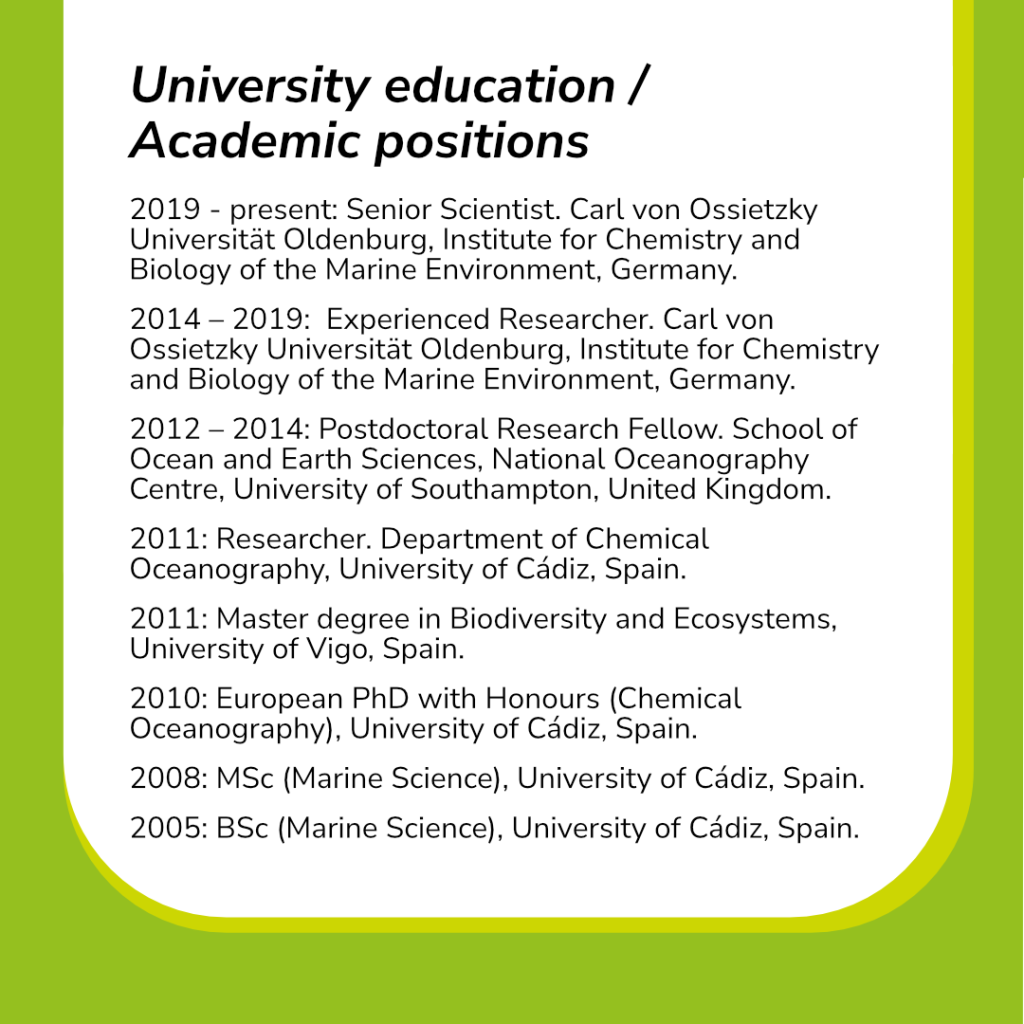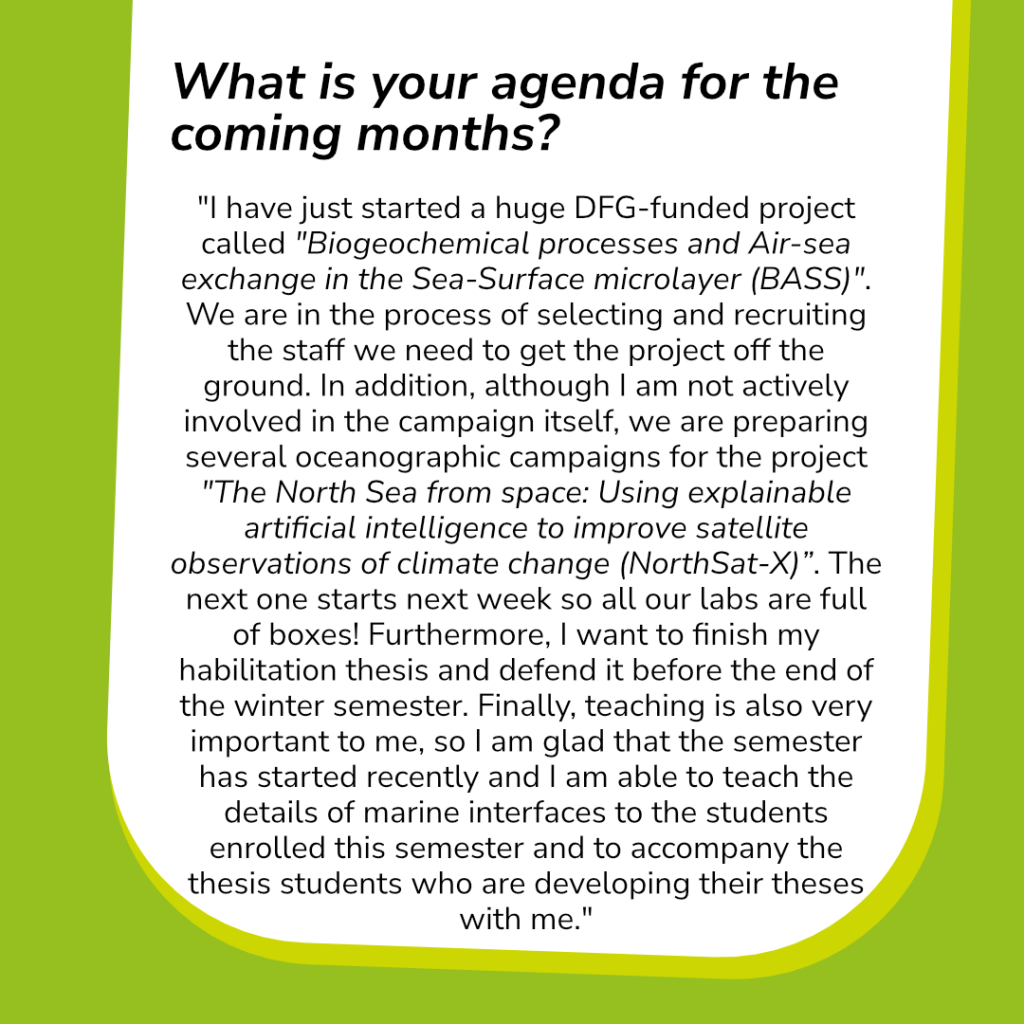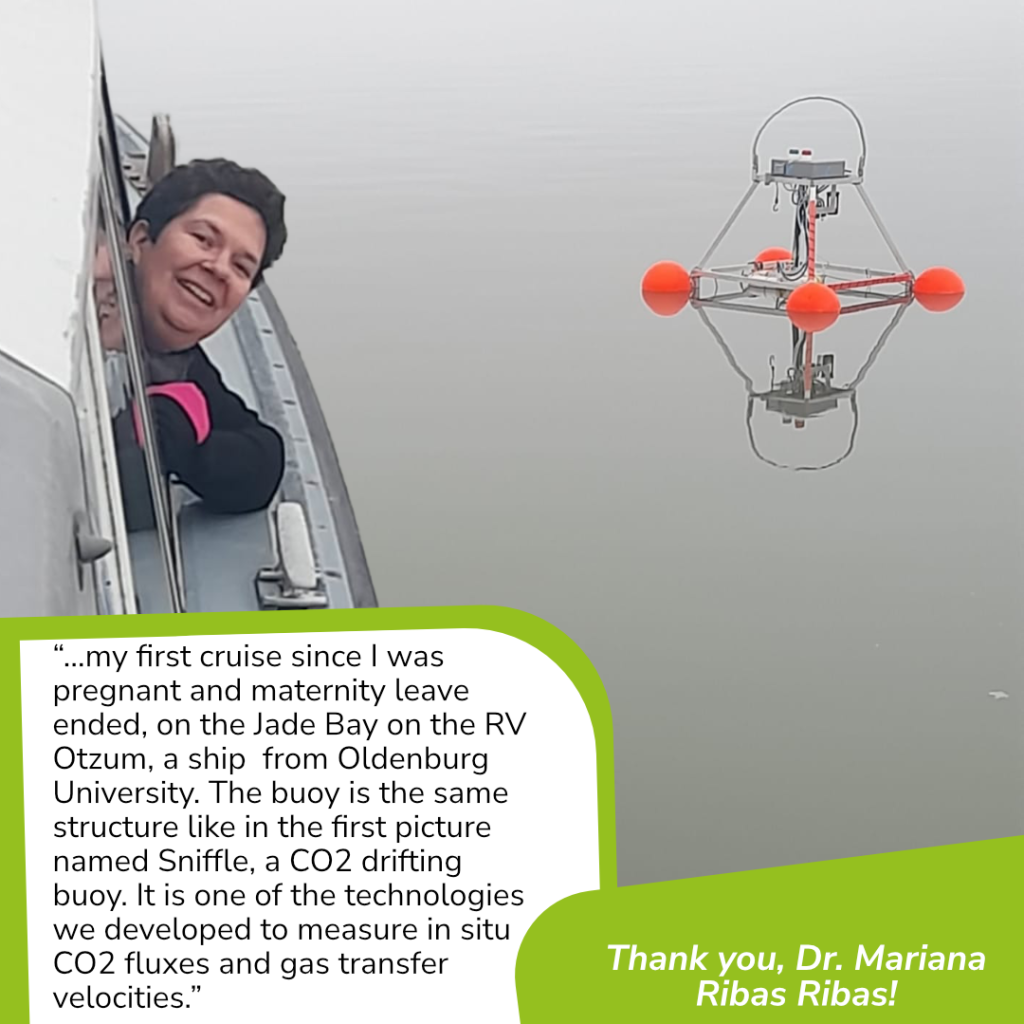Right on time for the start of the new semester, we have a new rOLe model post for you!
We are delighted to introduce oceanographer Dr. Mariana Ribas Ribas, Senior Scientist in the research group Processes and sensing of marine interfaces at the Institute for Chemistry and Biology of the Marine Environment (ICBM), University of Oldenburg, to you.
This is the link for the project “Biogeochemical processes and Air-sea exchange in the Sea-Surface microlayer (BASS)”: https://uol.de/en/bass
And this for the project “The North Sea from space: Using explainable artificial intelligence to improve satellite observations of climate change (NorthSat-X)”: https://uol.de/en/icbm/processes-and-sensing-of-marine-interfaces/projects/northsea-x
First published on instagram (@equality_uol).
